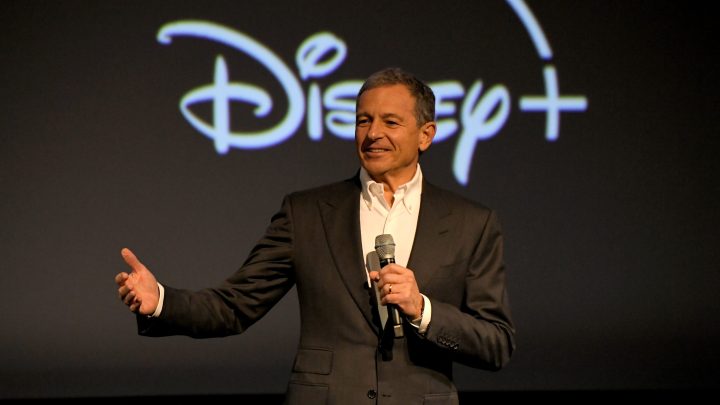
Is CEO pay out of control?

During the WGA strike this summer, Disney CEO Bob Iger made a comment on CNBC that rubbed a lot of people the wrong way. When asked about the Guild’s strike, Iger called the union’s expectations for higher compensation “just not realistic.” Meanwhile, many were quick to point out that Iger himself makes more than 500 times more than the median salary of his own employees.
Iger’s case is just one recent example of CEO pay facing renewed scrutiny, and according to a new special report from Fast Company on executive pay, it’s just the tip of the iceberg.
Kristin Toussaint is an editor at Fast Company. She joined Marketplace’s Kai Ryssdal to talk about how CEO pay has ballooned so much and how it might change in the future.
Kai Ryssdal: Why now is CEO pay a big thing, do you think? I mean, it seems like it’s been since the financial crisis, really, that CEO pay has been in the spotlight like this.
Kristin Toussaint: Definitely. The financial crisis was a huge point for realizing the incentives that go into CEO pay that can really drive it to extremes. But we’ve seen it coming up in union fights lately. UAW President Shawn Fain brought up the fact that it would take a typical battery plant worker 16 years to make what GM’s CEO makes in one week. And it’s come up in shareholder votes, like Netflix shareholders recently denied pay packages to their executives after this topic came up so much with the writers strike.
Ryssdal: You know, for a long time, it was just kind of accepted that the people who are the CEOs running these big companies got the big money. Now, it has become unfashionable to say the least. Where does the idea come from? Or where did the idea come from that CEOs have to be paid all this money?
Toussaint: Well, it’s interesting to look at how much this has actually changed. You know, back in 1965, the CEO to typical worker pay ratio was just 20 to 1. And then in 1989, it was 58 to 1. And some reports now put it around 325 to 1. But we’re also seeing ratios that far exceed that. One of the most extreme examples we pointed out at Fast Company is Live Nation’s ratio is 5,414 to 1. And then I think now people are really starting to question that. You know, you would think that more risk and more work from a CEO position deserves a higher pay. But is it 1,000 times the risk and 1,000 times the work? Especially during the pandemic, we saw that frontline, often low-wage workers were just so crucial to keeping the economy going. And so you have to wonder, you know, is the CEO’s value really hundreds or a thousand times those workers as well?
Ryssdal: So if the consensus, or the emerging consensus, among a part of this society is that CEOs are making disproportionate amounts of money — whether it’s 300 times what the average worker makes, or 5,000 times what the average worker makes — is there a way to more judiciously measure what a CEO ought to be paid?
Toussaint: Yeah, there’s a few efforts to sort of both get a grasp on CEO pay and rein it in. I mean, the SEC disclosure on pay ratios, which was a rule that came out in 2017, is a big part of us understanding just how much these CEOs are making, and that’s because their pay is so complicated. It’s not just a straight salary. It’s also often stock options and incentive bonuses. And then there’s, you know, a bunch of people working on figuring out what a CEO should actually be getting paid. Portland and San Francisco recently put a tax on businesses with a ratio above 100 to 1. And then there’s a couple of groups, like the Institute of Policy Studies, says that the ideal ratio is closer to 20 to 1.
Ryssdal: Do you expect actual change on this? I mean, look, you guys have devoted a lot of time and energy to bring this issue to the forefront. What do you think?
Toussaint: Yeah, I think the fact that it has become a topic that unions are bringing up, and that is gaining this attention, is a hopeful sign. I mean, companies are paying attention to this. They’re paying attention to the optics of it and the impacts of it. I mean, really high CEO-to-worker pay ratios are also associated with a host of negative business practices: less productivity, higher turnover. So I think as those things come to light more, we’ll maybe see not only some CEOs take it upon themselves to say, “How can I change this for the betterment of my employees in my work,” but also maybe some bigger policy changes.
There’s a lot happening in the world. Through it all, Marketplace is here for you.
You rely on Marketplace to break down the world’s events and tell you how it affects you in a fact-based, approachable way. We rely on your financial support to keep making that possible.
Your donation today powers the independent journalism that you rely on. For just $5/month, you can help sustain Marketplace so we can keep reporting on the things that matter to you.

















